第88章
The fact that not one of these species is Australia or nearly allied to any Australian form, is strongly corroborative of the opinion that Timor has never formed a part of that country; as in that case some kangaroo or other marsupial animal would almost certainly be found there. It is no doubt very difficult to account for the presence of some of the few mammals that do exist in Timor, especially the tiger cat and the deer. We must consider, however, that during thousands, and perhaps hundreds of thousands of years, these islands and the seas between them have been subjected to volcanic action. The land has been raised and has sunk again; the straits have been narrowed or widened;many of the islands may have been joined and dissevered again; violent floods have again and again devastated the mountains and plains, carrying out to sea hundreds of forest trees, as has often happened during volcanic eruptions in Java; and it does not seem improbable that once in a thousand, or ten thousand years, there should have occurred such a favourable combination of circumstances as would lead to the migration of two or three land animals from one island to another. This is all that we need ask to account for the very scanty and fragmentary group of Mammalia which now inhabit the large island of Timor. The deer may very probably have been introduced by man, for the Malays often keep tame fawns; and it may not require a thousand, or even five hundred years, to establish new characters in an animal removed to a country so different in climate and vegetation as is Timor from the Moluccas. I have not mentioned horses, which are often thought to be wild in Timor, because there are no grounds whatever for such a belief. The Timor ponies have every one an owner, and are quite as much domesticated animals as the cattle on a South American hacienda.
I have dwelt at some length upon the origin of the Timorese fauna because it appears to be a most interesting and instructive problem.
It is very seldom that we can trace the animals of a district so clearly as we can in this case to two definite sources, and still more rarely that they furnish such decisive evidence of the time, the manner, and the proportions of their introduction. We have here a group of Oceanic Islands in miniature--islands which have never formed part of the adjacent lands, although so closely approaching them; and their productions have the characteristics of true Oceanic islands slightly modified. These characteristics are: the absence all Mammalia except bats; and the occurrence of peculiar species of birds, insects, and land shells, which, though found nowhere else, are plainly related to those of the nearest land. Thus, we have an entire absence of Australian mammals, and the presence of only a few stragglers from the west which can be accounted for in the manner already indicated. Bats are tolerably abundant.
Birds have many peculiar species, with a decided relationship to those of the two nearest masses of land. The insects have similar relations with the birds. As an example, four species of the Papilionidae are peculiar to Timor, three others are also found in Java, and one in Australia. Of the four peculiar species two are decided modifications of Javanese forms, while the others seen allied to those of the Moluccas and Celebes. The very few land shells known are all, curiously enough, allied to or identical with Moluccan or Celebes forms. The Pieridae (white and yellow butterflies) which wander more, and from frequenting open grounds, are more liable to be blown out to sea, seem about equally related to those of Java, Australia, and the Moluccas.
It has been objected to in Mr. Darwin's theory, of Oceanic Islands having never been connected with the mainland, that this would imply that their animal population was a matter of chance; it has been termed the "flotsam and jetsam theory," and it has been maintained that nature does not work by the "chapter of accidents." But in the case which I have here described, we have the most positive evidence that such has been the mode of peopling the islands. Their productions are of that miscellaneous character which we should expect front such an origin; and to suppose that they have been portions of Australia or of Java will introduce perfectly gratuitous difficulties, and render it quite impossible to explain those curious relations which the best known group of animals (the birds) have been shown to exhibit. On the other hand, the depth of the surrounding seas, the form of the submerged banks, and the volcanic character of most of the islands, all point to an independent origin.
Before concluding, I must make one remark to avoid misapprehension.
When I say that Timor has never formed part of Australia, I refer only to recent geological epochs. In Secondary or even Eocene or Miocene times, Timor and Australia may have been connected; but if so, all record of such a union has been lost by subsequent submergence, and in accounting for the present land-inhabitants of any country we have only to consider those changes which have occurred since its last elevation above the waters since such last elevation, I feel confident that Timor has not formed part of Australia.